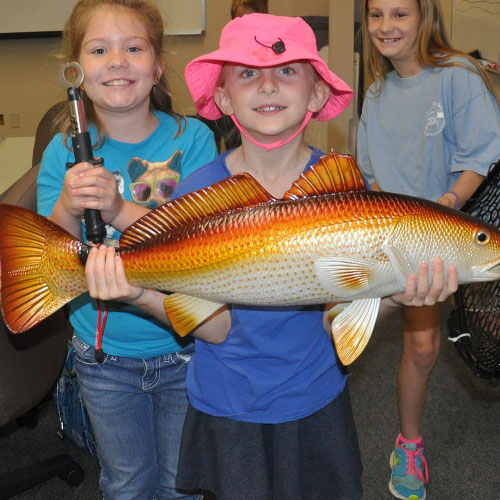As recreational anglers, we should always supplement our appreciation for the sport with a high level of environmental awareness and responsibility.
As recreational anglers, we should always supplement our appreciation for the sport with a high level of environmental awareness and responsibility. By practicing sustainable fishing, we can help maintain and contribute to the health of the fish species that inhabit our waterways.

.jpg)
Many people think that sustainable fishing methods apply only to commercial fishing operations, but this isn't at all the case. Recreational anglers can also make an impact by setting an example or sharing information on how to practice ethical and sustainable fishing.
Here are five facts about sustainable fishing that all anglers should know:
-
Catch and release fishing contributes to sustainability. Use appropriate catch and release methods on every fishing trip and share your knowledge with other anglers. Read about special release techniques that are required for deep water fish.
-
Discarded fishing line left in our waterways can entangle birds and fish. Reduce the amount of discarded fishing line by bringing all used line back to the dock with you and placing it into a recycling container or in the trash.
-
Sustainable fishing means targeting plentiful species since they can reproduce quickly. Even when you aren't out on the water fishing, you can make ocean-friendly, sustainable choices about the seafood you eat when dining out at a restaurant or when purchasing fish from a market.
-
You can use every part of the fish that you keep. If you choose to keep your catch to cook it, use any parts of the fish that you don't eat by composting those parts with wood chips, leaves or bark. The microorganisms in your compost pile will feed on the waste and convert it into a nutrient-rich fertilizer that is ideal for growing plants.
-
Proper fish identification is an important part of sustainable fishing. As a recreational angler, make sure you know how to identify the different fish species that are present in your local waterways. Proper fish identification will ensure that you are following the state fishing regulations, including bag limits and size limits, for each species.
Now that you have a few more facts about sustainable fishing, don't forget to buy your fishing license online and check the current fishing regulations for your state.
Photo Credit: Florida Fish and Wildlife Conservation Commission photo by Margaret Thompson









